The Cheil Hotel Onyang (온양제일호텔)
18.2 Km 12287 2021-02-01
1462, Oncheon-daero, Asan-si, Chungcheongnam-do
+82-41-547-2500
The Cheil Hotel Onyang is located in Asan's Onyang Hot Springs zone, well known ever since the Baekje dynasty. The building boasts the harmony of traditional Korean beauty and functionality. The hotel spa uses 55'C water containing sodium bicarbonates from 305 meters below ground. The spa includes facilities such as Amethyst, Hardwood Charcoal, Bamboo, and Hwangto jjimjilbangs, along with a Finnish sauna great for the skin at 110'C. Guests may also try delicious food at the Korean restaurant, and feel the ambiance of traditional Korean beauty in the hotel's Korean-style rooms, each offering waters from the hot springs. Also, many tourist attractions are nearby including Hyeonchungsa Temple, Folk Museum, Asanho Lake, Sabgyocheon Stream, Independence Hall of Korea, Sudeoksa Temple and more.
Gongseri Catholic Church (아산 공세리성당)
18.2 Km 16733 2021-10-22
10, Gongseriseongdang-gil, Asan-si, Chungcheongnam-do
+82-41-533-8181
Gongseri Catholic Church was founded in 1894 as the main parish of the Daejeon diocese in Gongse-ri, Inju-myeon that connects Asanman Bay to Sapgyocheon Stream. Early missionaries originally used a common house for church meetings in the early years until in 1897 when a rectory was built, followed by the establishment of the main church in 1922. This was the first Catholic church in Chungcheongnam-do and the religion spread across Anseong, Onyang, and Dunpo to establish regional churches respectively. The grounds have three graves of prosecuted martyrs, a parish and rectory, retreat house, and meeting room. The premises is surrounded by beautiful views of a lush forest.
Onyang Hot Springs (온양온천지구)
18.2 Km 62943 2024-03-28
1459 Oncheon-daero, Asan-si, Chungcheongnam-do
+82-41-540-1234
Onyang Hot Springs is the oldest hot springs complex in Korea, a place where the kings of Joseon (1392-1897) recuperated and bathed, thanks to its proximity to Seoul. In the 1970s and 1980s, it was a popular honeymoon destination. The water here has a temperature of about 44-60℃ and contains substances that are beneficial for the human body. The area boasts a large number of hotels and water parks.
Sudeoksa Temple (수덕사)
18.3 Km 28645 2021-12-03
79, Sudeoksaan-gil, Yesan-gun, Chungcheongnam-do
+82-41-330-7700
Sudeoksa Temple, which has played an important role in the history of Korea’s Buddhism, is located at the foot of Deoksungsan Mountain. It was one of twelve temples from the Baekje Kingdom mentioned in Chinese historical records. There is no historical record of when the temple was founded but researchers believe it was founded sometime during the reign of King Wuideok (554-597).
The main building of Sudeoksa Temple, Daeungjeon Hall, was constructed in 1308 during the Goryeo dynasty. It was repaired four times between 1528 and 1803, but fortunately kept its original beauty. In addition to Daeungjeon Hall, Sudeoksa Temple houses many cultural treasures, such as the Three-story Stone Pagoda of Sudeoksa Temple.
Myeoncheoneupseong Walled Town, Dangjin (당진면천읍성)
18.4 Km 24044 2023-07-17
14 Mongsan-gil, Dangjin-si, Chungcheongnam-do
Since the ancient days, the city of Dangjin was where an important sea route to China existed along with Seosan and Taean. Not only was it an essential trading post with China, it was also a critical military hub. Myeoncheoneupseong Walled Town is widely known to have been constructed in the 16th year of King Chungnyeol's reign in the Goryeo Dynasty (1290) but many believe that it had actually existed ever since the early Baekje period for the purpose of stopping foreign invasions. Myeoncheoneupseong was a fortress that had four main gates in the east, west, south and north.
Shoe Marker - Onyang Branch [Tax Refund Shop] (슈마커 온양)
18.5 Km 0 2024-04-22
23, Ongung-ro, Asan-si, Chungcheongnam-do
-
Artbox - Asan Branch [Tax Refund Shop] (아트박스 아산)
18.6 Km 0 2024-04-17
3, Chungmu-ro, Asan-si, Chungcheongnam-do
-
Seosan Gaesimsa Temple (개심사(서산))
18.6 Km 49163 2021-09-18
321-86, Gaesimsa-ro, Seosan-si, Chungcheongnam-do
+82-41-688-2256
Situated in a dense forest in Sangwangsan Mountain and 6 kilometers away from Haemi-myeon, Gaesimsa Temple is one of the four major temples in Chungcheongnam-do. The path from the parking lot to the temple site is quite remote and curved, but beautiful especially in spring when cherry blossoms are in full bloom.
The temple was built in 1484 during the 15th year of King Seongjong and designated as a Treasure. The architecture of the temple stands out, as the buildings use bent tree trunks for pillars.
Onyang Grand Hotel (온양그랜드호텔)
18.8 Km 11960 2019-11-05
7, Chungmu-ro20beon-gil, Asan-si, Chungcheongnam-do
+82-41-543-9711
The town of Onyang, where Onyang Grand Hotel is located, is the oldest hot springs area in Korea. The history of Onyang can be traced back to 1,300 years ago when the Joseon Dynasty kings visited the hot springs in the area to relax and unwind. Remains of the hot springs sought by the royalty can be found in Onyang today.
Onyang Grand Hotel has over 150 rooms and high quality facilities, including hot springs, a sauna, a fitness center, an indoor swimming pool, wedding and banquet halls and a bowling alley. Guests may also visit a wide range of tourist attractions nearby.
Seosan Munsusa Temple (문수사(서산))
19.0 Km 20688 2020-01-16
201, Munsugol-gil, Seosan-si, Chungcheongnam-do
+82-41-663-3925
The exact founding date of Munsusa Temple is unknown because there are no official records that have been discovered. The temple is estimated to date back to the Goryeo dynasty due to a prayer found in 1973 at the Gilt-bronze Seated Buddha in the temple’s Geungnaksiljeon Hall dated 1346. Around 600 items were discovered along with the prayer, including unbleached ramie cloth, a short-sleeved gown, rice, and barley. Munsunsa has the tranquil atmosphere of a mountain temple. When spring arrives, cherry blossom flowers and wild flowers bloom across the mountain and the nearby cattle farm call to mind a traditional Korean painting.
Munsusa Temple's Geungnaksiljeon Hall is a beautiful building constructed in the Jusimpo style (the column brackets placed only on top of the columns) combined with Dapo style (the column brackets placed between columns as well as on top of the columns). It is designated as Chungcheongnam-do Tangible Cultural Property No. 13. Inside the gorgeously and majestically carved hall are many relics including Gilt-bronze Seated Buddha, Samsebulsang statues (statues of Buddhas of Three Times (past, present and future)), Nahansang statues (statues of disciples of Buddha), and various portraits of Buddha.
The Gilt-bronze Seated Buddha (x_height: 70cm, length between knees: 50cm) was created in 1346. It is a fine example of late Goryo dynasty style Buddha statue along with Gilt-bronze Seated Bhaisajyaguru Buddha of Janggoksa Temple (Treasure No.337).
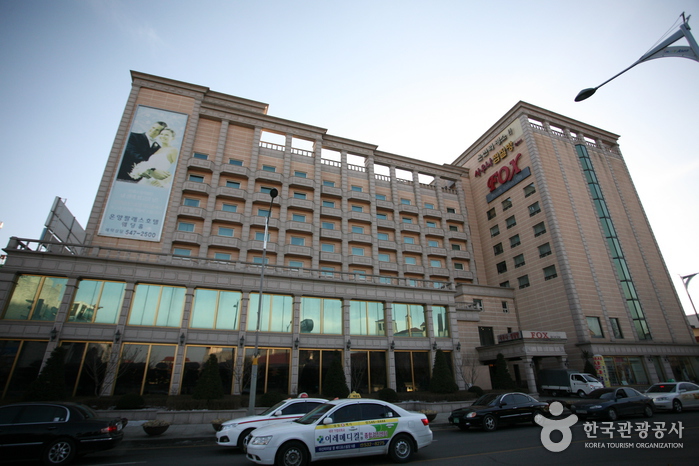

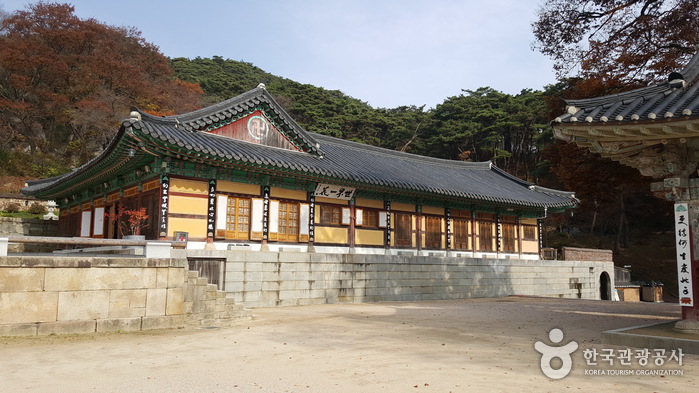
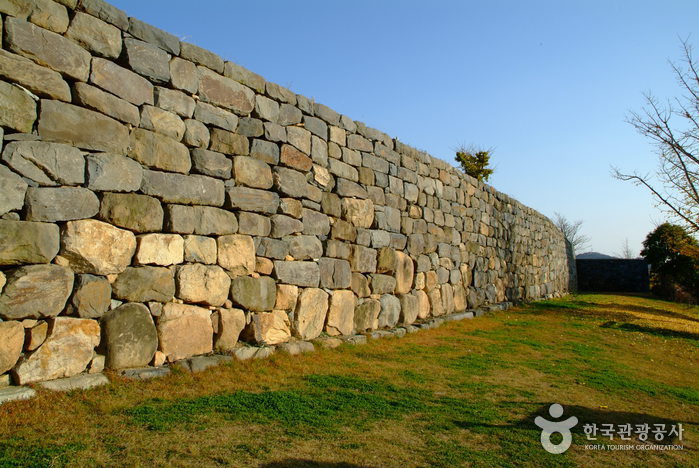
![Shoe Marker - Onyang Branch [Tax Refund Shop] (슈마커 온양)](http://tong.visitkorea.or.kr/cms/resource/86/2883286_image2_1.jpg)
![Artbox - Asan Branch [Tax Refund Shop] (아트박스 아산)](http://tong.visitkorea.or.kr/cms/resource/82/2883282_image2_1.jpg)
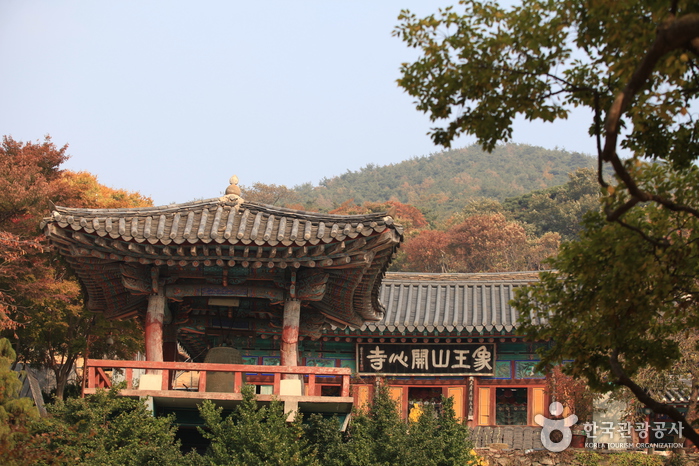
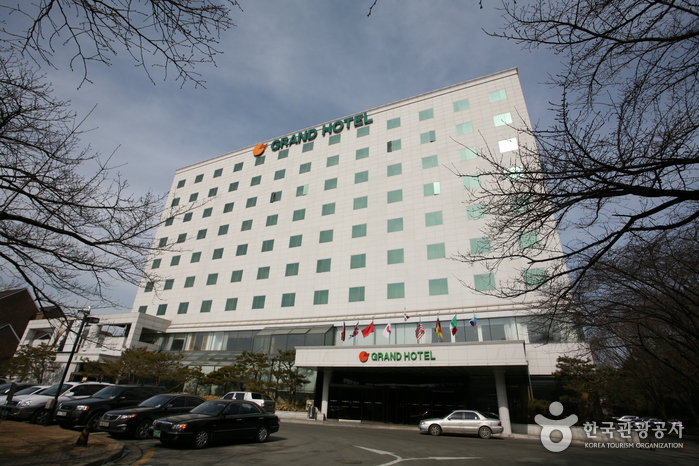
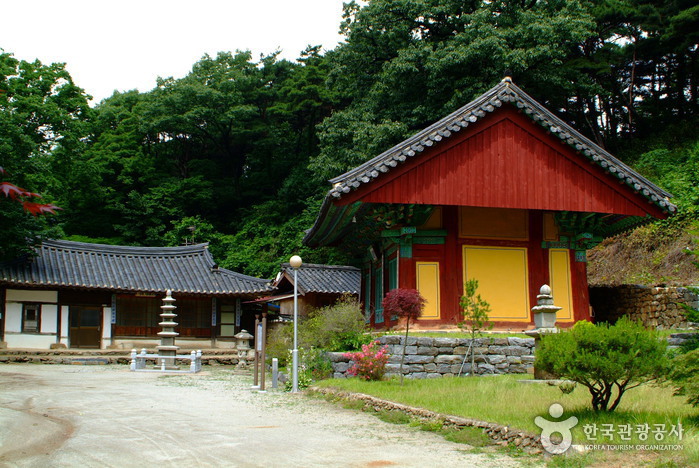
 English
English
 한국어
한국어 日本語
日本語 中文(简体)
中文(简体) Deutsch
Deutsch Français
Français Español
Español Русский
Русский